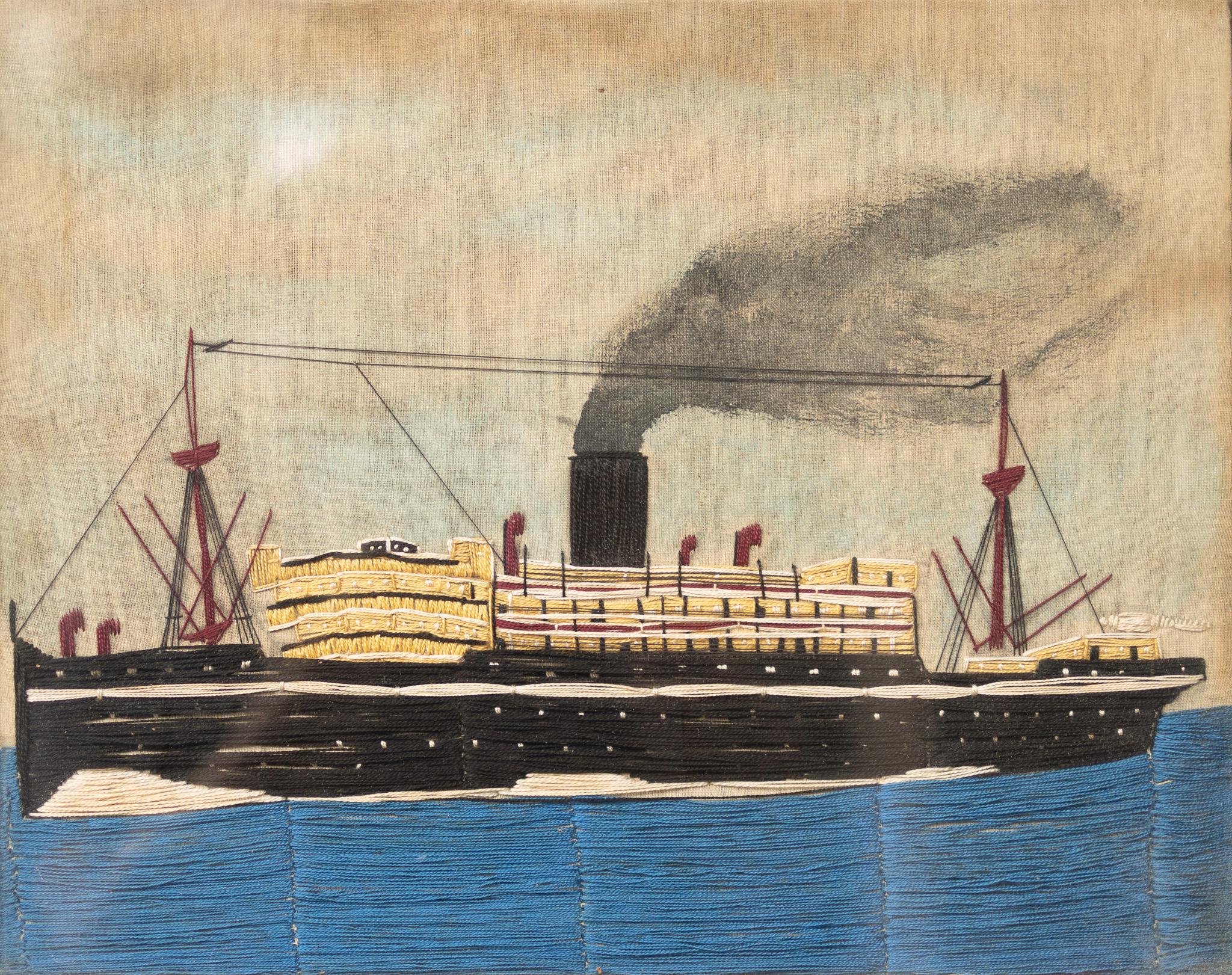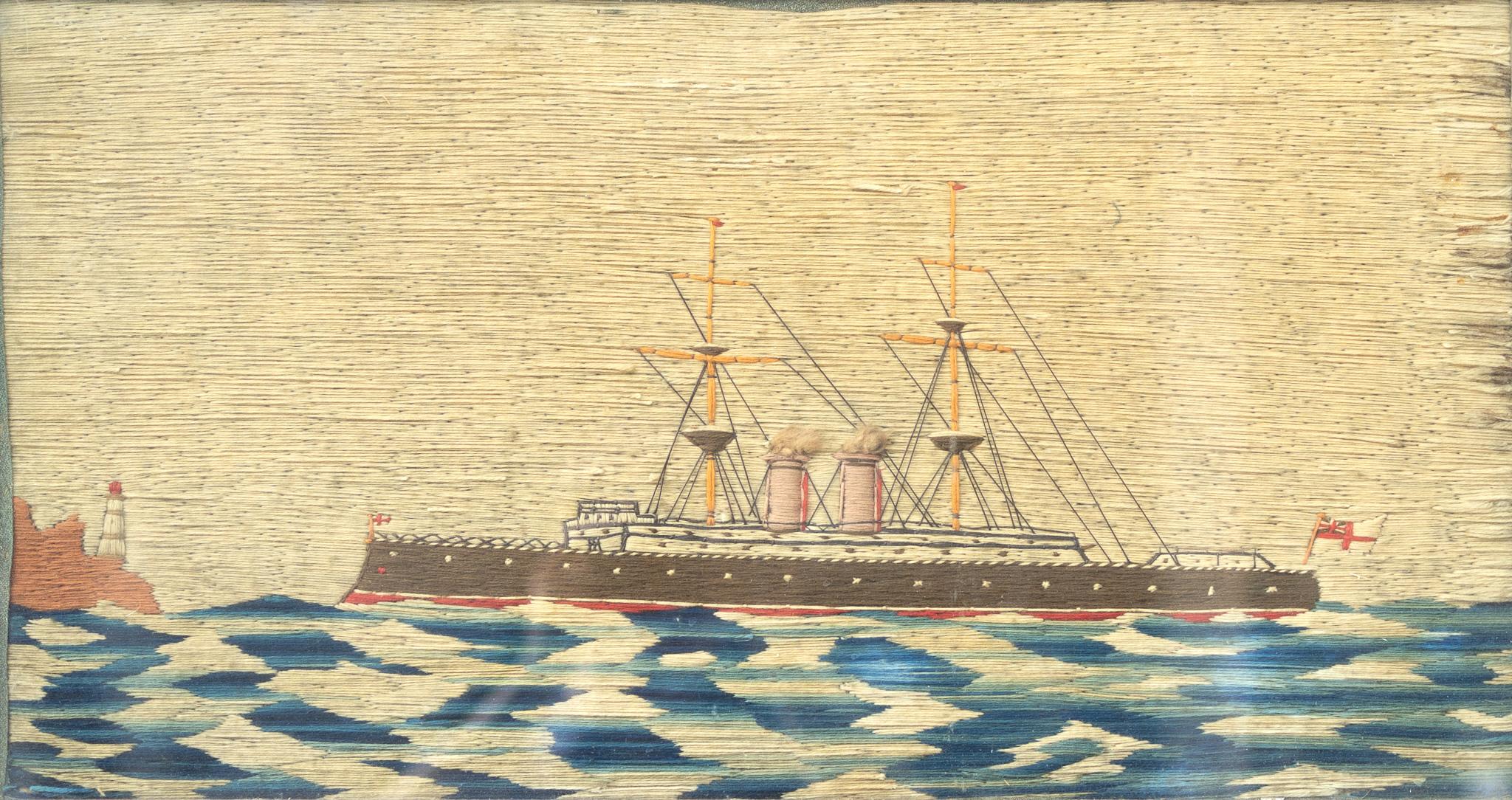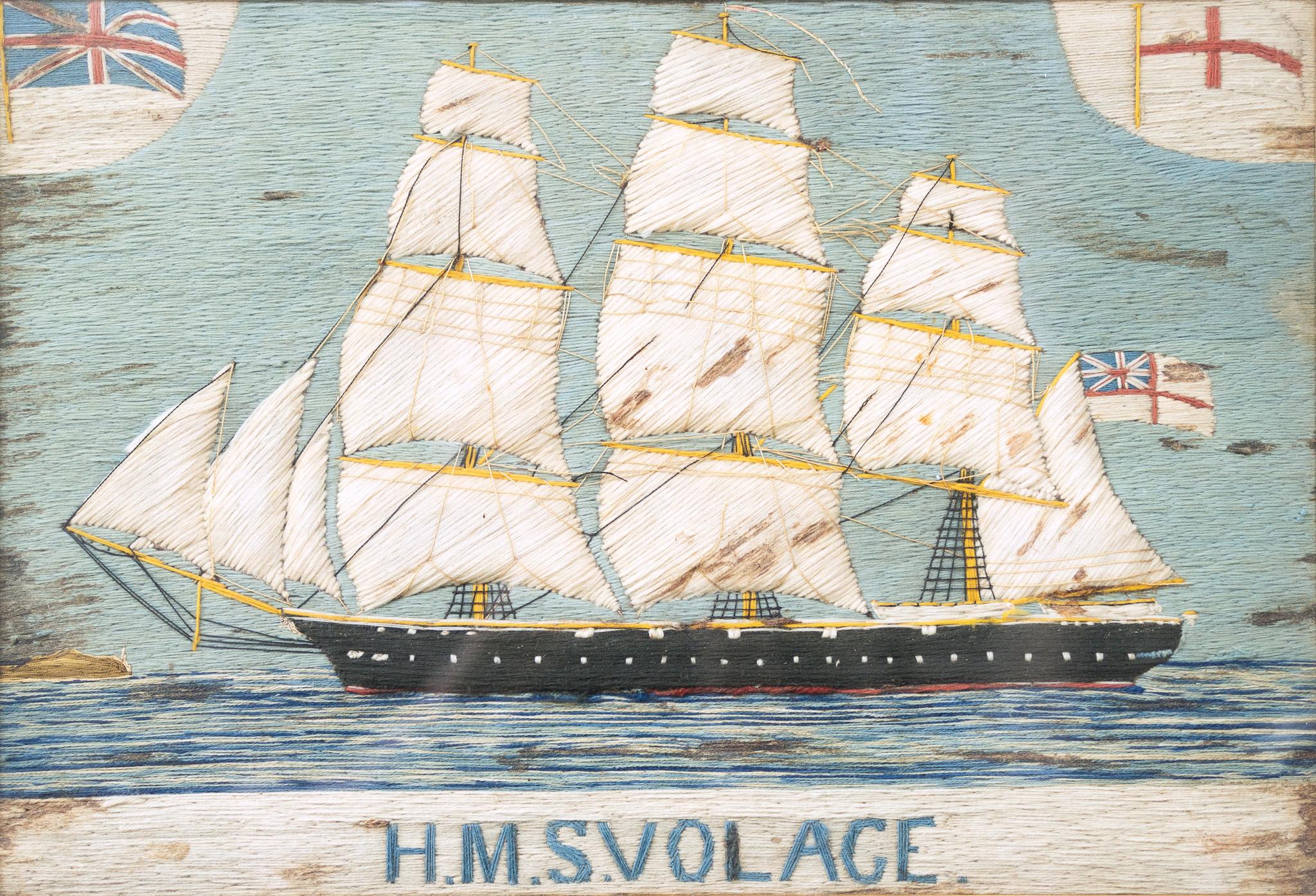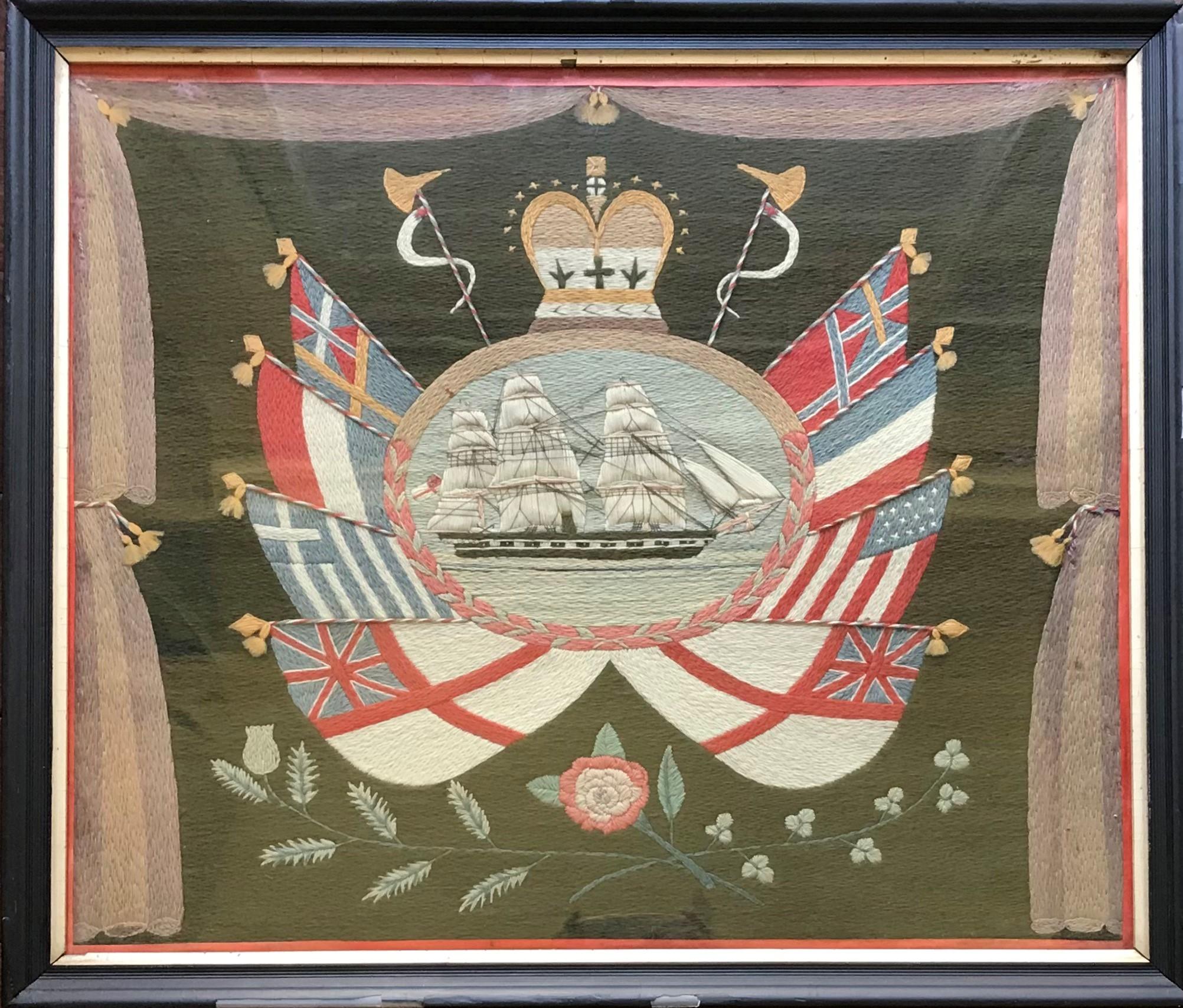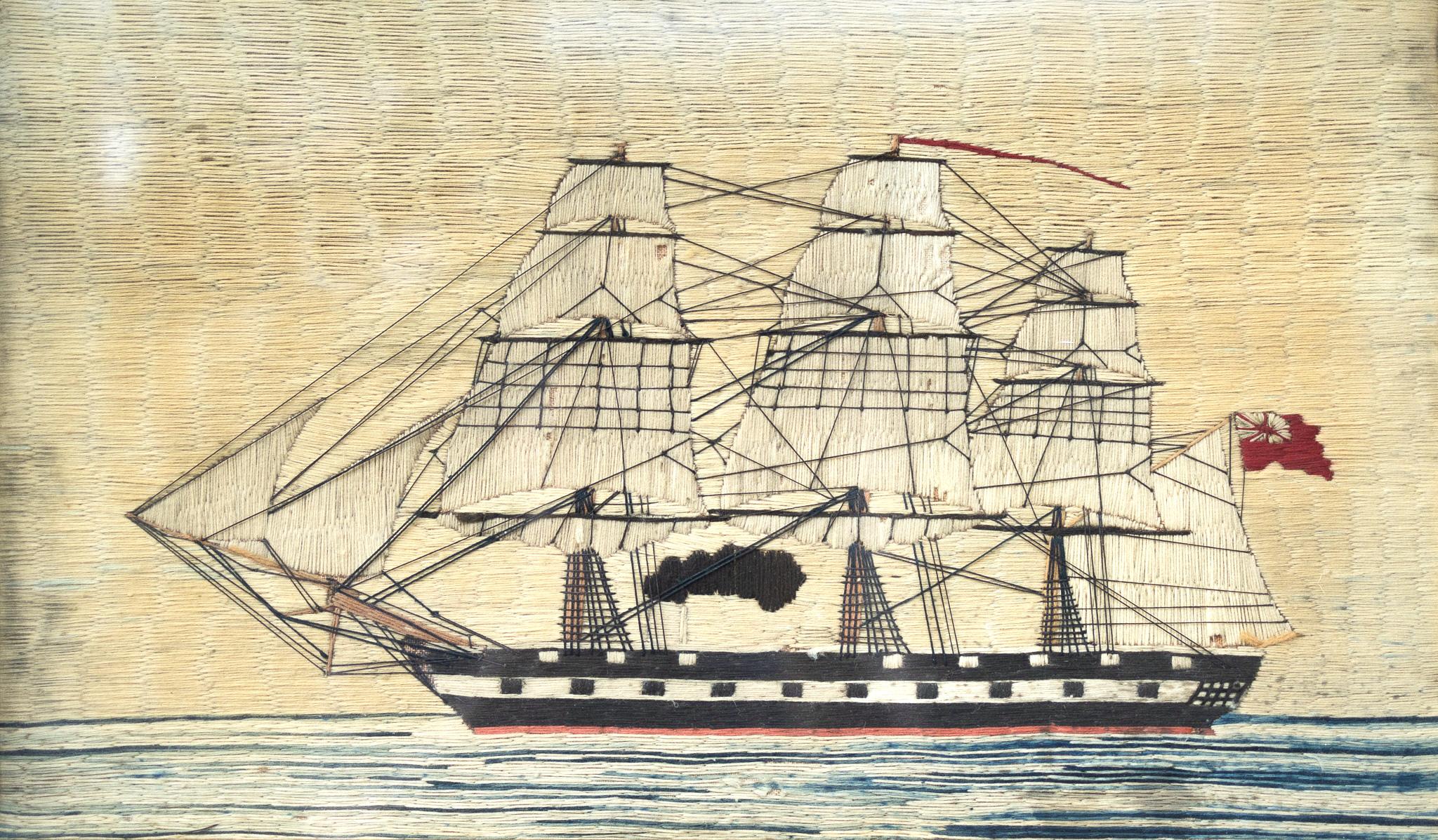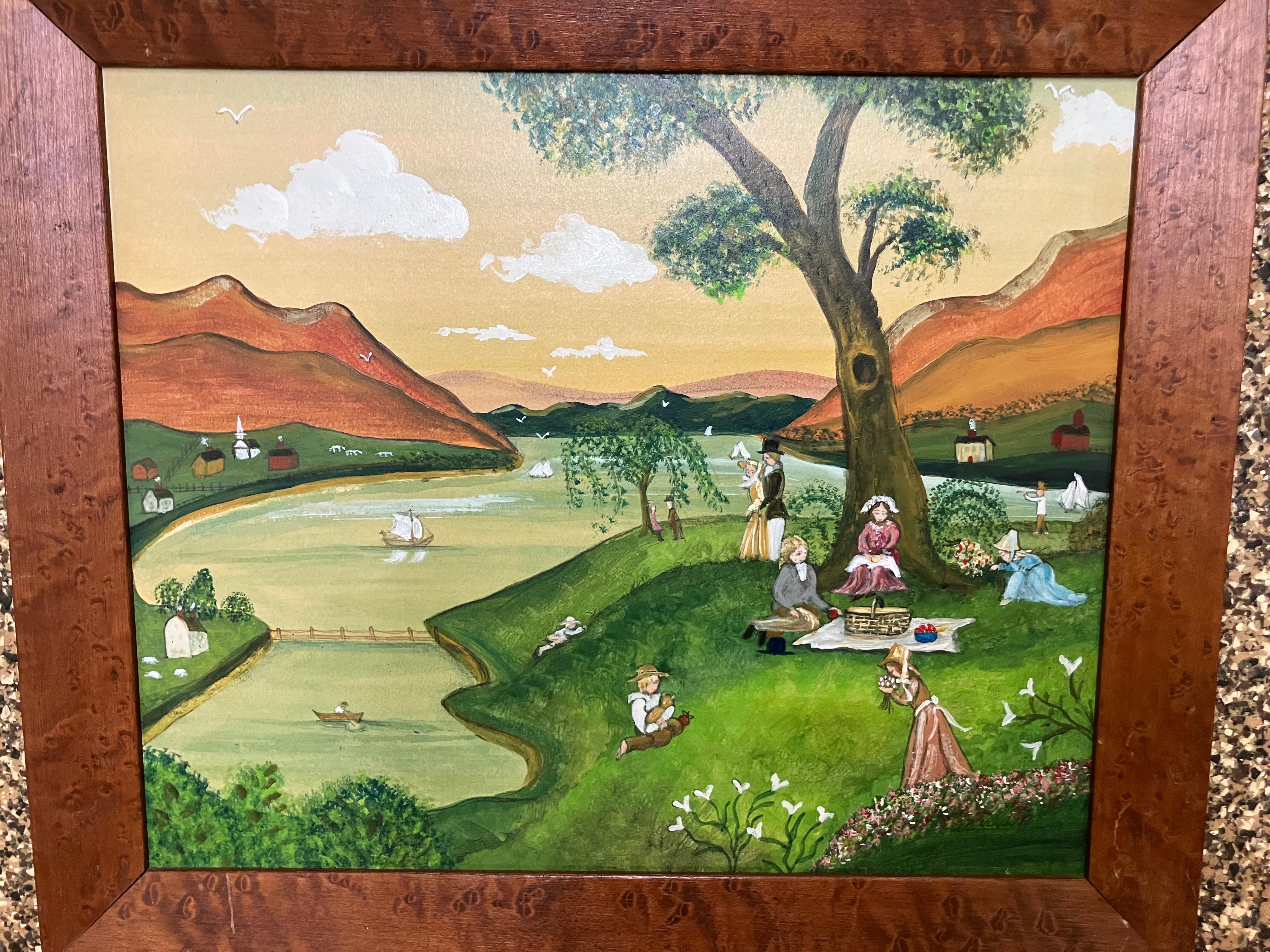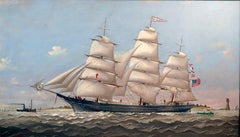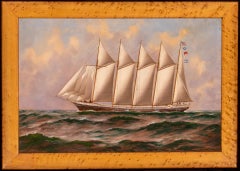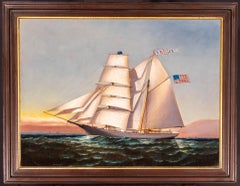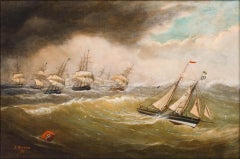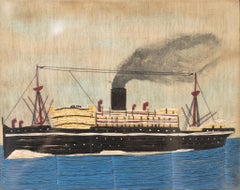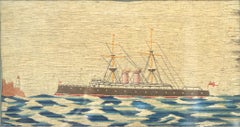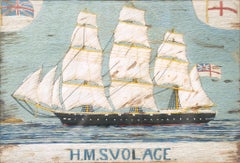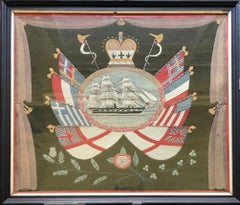Items Similar to AUSTRALASIAN Off South Sydney Heads
Want more images or videos?
Request additional images or videos from the seller
1 of 7
UnknownAUSTRALASIAN Off South Sydney HeadsCirca 1888
Circa 1888
$18,500
£13,983.71
€16,069.77
CA$25,761.14
A$28,658.21
CHF 15,022.99
MX$350,196.31
NOK 191,299.06
SEK 180,081.60
DKK 119,954.70
Shipping
Retrieving quote...The 1stDibs Promise:
Authenticity Guarantee,
Money-Back Guarantee,
24-Hour Cancellation
About the Item
Proud Liner of the Aberdeen White Star Line, AUSTRALASIAN carried emigrants and first-class passengers to Australia and South Asia in the late 1880s & 1890s. This colorful period woolwork picture depicts the steaming vessel near "South Sydney Heads" with its prominent lighthouse, with a man working the signal tower flag. Several sailors and passengers are shown onboard the ship as well. Sydney Heads was the site of the first 'forced landing' of British passengers, some 750 convicts, in 1788.
Possessing attributes which make the artwork highly desirable and different from most surviving examples of these fine works, the puffed sails are extremely nice to have. Signed works of this nature are very rare, and the embroidered title and known headlands are a plus. The scenes detailed look at the cliffs, and the nautical activity at sea and shore also add value.
The ship flies the British Red Ensign, and was built in 1884 by Robert Napier of Glasgow for the Aberdeen Line. Her steam/sail rig provided versatility while she demanded a substantial amount of coal fuel, which was supported by then newly built stations along the route which were stocked for the Southern Hemisphere voyages.
Sight Size: 24 1/2 Inches x 37 1/4 Inches
Signed LL: C.A. Young
About the Seller
No Reviews Yet
Vetted Professional Seller
Every seller passes strict standards for authenticity and reliability
Established in 1972
1stDibs seller since 2022
6 sales on 1stDibs
Typical response time: 1 to 2 days
- ShippingRetrieving quote...Shipping from: Costa Mesa, CA
- Return Policy
Authenticity Guarantee
In the unlikely event there’s an issue with an item’s authenticity, contact us within 1 year for a full refund. DetailsMoney-Back Guarantee
If your item is not as described, is damaged in transit, or does not arrive, contact us within 7 days for a full refund. Details24-Hour Cancellation
You have a 24-hour grace period in which to reconsider your purchase, with no questions asked.Vetted Professional Sellers
Our world-class sellers must adhere to strict standards for service and quality, maintaining the integrity of our listings.Price-Match Guarantee
If you find that a seller listed the same item for a lower price elsewhere, we’ll match it.Trusted Global Delivery
Our best-in-class carrier network provides specialized shipping options worldwide, including custom delivery.More From This Seller
View AllShip LUCY G. DOW
Located in Costa Mesa, CA
The strength of a great ship portrait lies with its overall striking composition blended with an attention to detail. Charles Sidney Raleigh was extremely skilled with both elements, and this is one of his finest works. An American full-rigged ship of large proportions, LUCY G. DOW is one of many ships owned by Maine interests, where the ship would be locally built and consortium owned. More Maine captains owned part of their ships than any other East Coast region, it appears through an informal survey of lists.
Note the fine details of the captain and crew hard at work onboard off the coast. The numerous buildings are clustered on the peninsular stretch with a pier coming out near the lighthouse’s walkway. At the distance, ship masts...
Category
1880s Other Art Style Landscape Paintings
Materials
Canvas, Oil
The Five-Masted Schooner ELINOR H.
Located in Costa Mesa, CA
This attractive portrait features the five-masted schooner ELINOR H. at full sail in an active sea. The ship has crisp lines and a sharp sense of detail, likely because it was painte...
Category
1920s Other Art Style Paintings
Materials
Canvas, Oil, Board
The Brigantine E. MILLER
By Elisha Taylor Baker
Located in Costa Mesa, CA
This luminous work depicts the American merchant brigantine E. MILLER. The sun sits low behind the ship, illuminating the sky with colors of yellow and deep rose tones. The sun has just touched the sea at the ship's bow and around her stern, creating a halo of light in the small waves. The E. Miller is in full sail with sailors active on her deck, with her brightly colored name pennant snapping in the wind alongside the American flag and company flag. Though unsigned, this is clearly the work of artist Elisha Tyler Baker. Baker only signed about a third of his paintings, so this is not unusual for the artist. The rendering of the vessel to his touch in the sea and sky all give very clear clues that the work is his.
Though little information remains about her voyages we know the ship E. MILLER was built in Virginia by the Surry Company in 1856 and had a weight of 132 tons. Sailing out of Richmond she was also known to frequent the port of Baltimore. From Richmond she would have carried out agricultural goods, lumber, and iron, while importing manufactured goods and guano to fertilize Virginia's tobacco fields.
Given that she was built before the Civil War and was ported in Richmond throughout the war, it's likely the E. MILLER was involved in moving goods to supply Confederate forces.
Sight Size: 23 3/4 x 32 Inches
Vallejo Gallery features the finest in marine and maritime antiques...
Category
1860s Paintings
Materials
Canvas, Oil
Follow the Leader
By Joseph Witham
Located in Costa Mesa, CA
The most important maritime center in the 19th century, Liverpool, had many advantages. Located on the England-facing west coast of the Irish Sea, the Mersey approach was wide, deep and actively associated with all aspects of shipping. It also faced northwest, as the distressed fleet in Witham's work has discovered on a stormy February 8, 1881.
To the rescue of the 12 ships, the Pilot Schooner No.2, LEADER, signals the fleet to follow, using the pre-1900 commercial code signals "l w c". She has waited for the rising tide and keeps the line tight to the red starboard buoy, Q1, which marks the beginning of the Queen's Channel. Within a span of hours, all twelve ships were led successfully to their docks.
Witham painted the scene in conjunction with the great acclaim the Pilots received in 1881, and it became so popular that he painted additional works marking the event over time. His local contemporary, Samuel Walters...
Category
1890s Other Art Style Paintings
Materials
Canvas, Oil
Bark ST. GEORGE off South Stack
By William G. Yorke
Located in Costa Mesa, CA
This fine portrait is of the merchant bark ST. GEORGE sailing past the South Stack Lighthouse, the last signaling station in a chain of twelve leading ships along the Welsh coast and out to sea from Liverpool Harbor. Painted with great detail throughout, the ship features multiple figures on deck, in full sail and with flags flying including that of her owners Hall and Fairweather of St. John, New Brunswick, Canada.
The bright scene has particularly nice cloud work in the sky and features the stylized short, green swells with a touch of white spray typical of the Liverpool school artists. At her bow, another sailing ship heads...
Category
1870s Other Art Style Paintings
Materials
Canvas, Oil
Full Rigged Ship GATHERER
By Alexander Charles Stuart
Located in Costa Mesa, CA
A stalwart American ship clearing the Delaware headed for Honolulu with a load of coal, this broadside ship portrait by Alexander Charles Stuart is of the Ship GATHERER. In her maiden year of service, the Bath, Maine-built Downeaster went to New Orleans with hay, took a load of cotton from there to Liverpool, and crossed to collect the coal in Philadelphia before heading to Hawaii. She'd make 8 Cape Horn voyages, averaging about 129 days, a profitable and fast sailing Downeaster, and yet still record one of the bloodiest voyages in merchant maritime history.
In this portrait, A.C. Stuart shows the large wooden vessel...
Category
1870s Other Art Style Paintings
Materials
Canvas, Oil
You May Also Like
19th Century Steamboat British Woolie
Located in Austin, TX
An original 19th Century Steamboat Woolie
12" x 15.5"
Medium: wool
Category
1860s Folk Art More Art
Materials
Wool
19th Century British Steamboat Woolie
Located in Austin, TX
19th British Steamboat with lighthouse featuring English St. George Flag at the Bow and Stern of the ship and a Union Jack Flag at the Stern of the ship.
Frame is Birds Eye Maple
Category
Mid-19th Century Folk Art More Art
Materials
Wool
H.M.S Volage British Woolie 1869
Located in Austin, TX
Created in 1869 by British Naval Officer a woolie of H.M.S Volage which was built for the Royal Navy in the late 1860s and was assigned to the Flying Squandron circumnavigating the w...
Category
Mid-19th Century Folk Art More Art
Materials
Wool
19th Century Woolie with Curtain Bordered Ship
Located in Austin, TX
19th Century British Woolie
featuring a curtain border and floral accents
Medium is wool and is considered traditional folk art made by British Royal ...
Category
Mid-19th Century Folk Art More Art
Materials
Wool
British Woolie in Maple Frame
Located in Austin, TX
"Sailboat in a Maple Frame" - British Woolie, 1870
Wool Embroidery
12 x 19.5 inches
Framed 14 x 22 inches
19th Century British Woolie in Maple Frame fe...
Category
Late 19th Century Folk Art More Art
Materials
Wool
Vintage Folk Art Painting
Located in San Francisco, CA
Charming mid century or possibly earlier folk painting. It is an oil on board measuring 12 inches wide by 10 inches high. The frame measures 14 inches wide by 12 inches high.
Category
Mid-20th Century Folk Art Landscape Paintings
Materials
Oil
